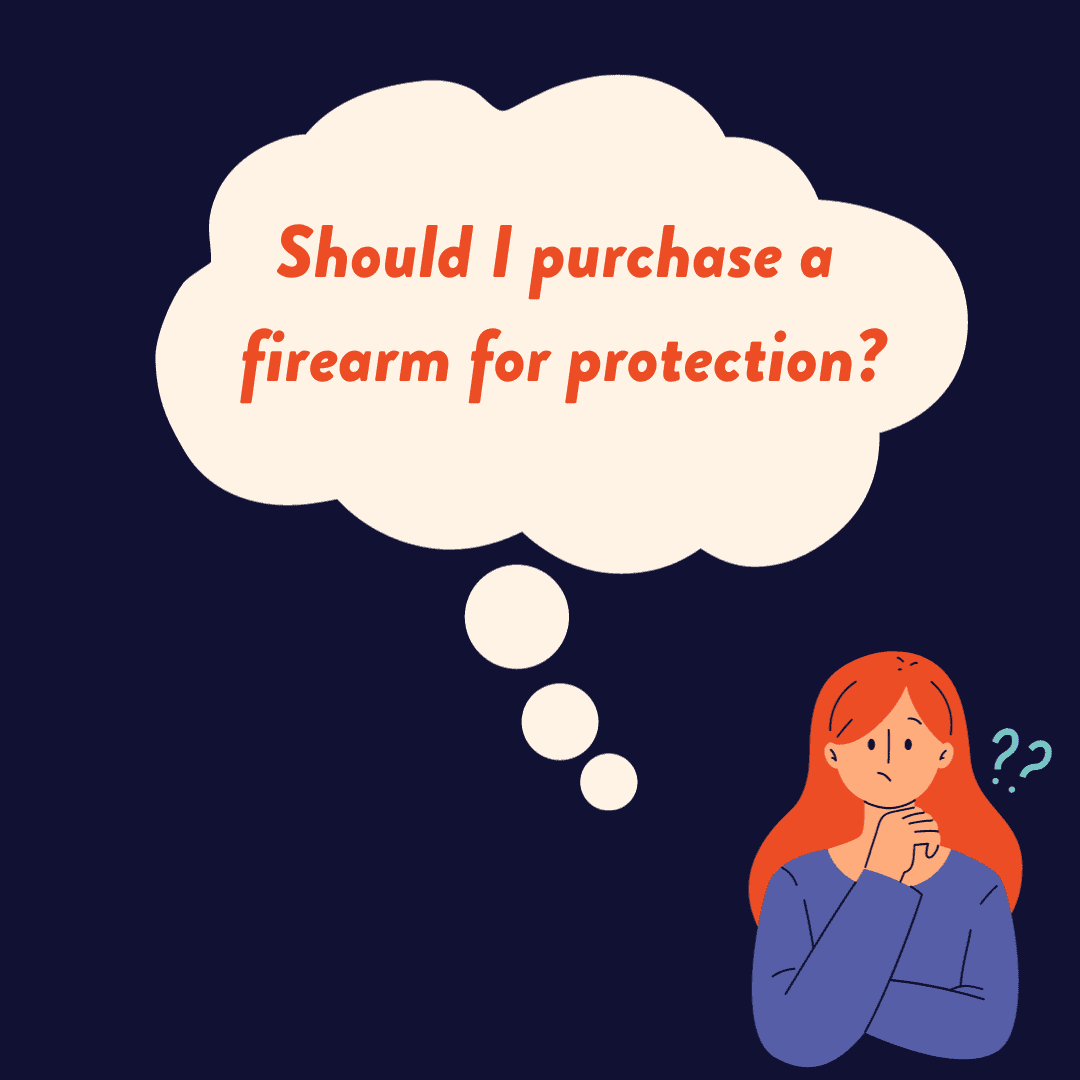Safety Planning
Around Firearms
All survivors of intimate partner violence are unique, and there is no one-size-fits-all approach to safety.

How to Safety Plan with Firearms in the Home
The presence of firearms in the home can make a violent situation much more deadly, and it’s important for anyone experiencing intimate partner violence to be aware of the risks, and the steps you can take to reduce them. Safety planning is one way you can prioritize your and your family’s safety. You are the expert on your own situation, so consider if these suggestions are right for you. If you have any questions, or would like to safety plan with an advocate, you can always give us a call.
During a quiet time:
- Familiarize yourself with the firearms in your household. Knowing where firearms are stored, how much ammunition they hold, and what type of guns your partner has can be life saving information later on.
- Consider getting a protective order. There are many types of protective orders that can prevent your partner from owning or buying firearms and ammunition. Read the “Pathways to Safety” section below to learn more.
- Familiarize yourself with first aid techniques, and consider purchasing a first aid kit with gunshot wound specific materials (like QuikClot, elastic bandages, and trauma shears.)
- Determine a safe escape route that includes as much cover (things that bullets can’t go through) and concealment (things you can hide behind) on the way.
When making this decision, it is important to be informed on the risks of firearm ownership. The presence of a firearm in the home increases the risk of experiencing a firearm-related death.
- Consider that any weapon you have can be taken from you, and potentially used against you. There is also no evidence to support the idea that firearm ownership reduces intimate partner violence, or has any protective effects.
- If you have children in the home, there are additional risks to consider. As of 2020, firearms are now the leading cause of death for U.S. children and teens under the age of 18, and the American Academy of Pediatrics (AAP) advises that the safest home for a child is one without guns.
- It is also important to consider whether or not you have the time to be trained on safe firearm use and ownership and the financial resources to store your guns safely (purchasing gun safes, trigger locks, etc.).
Frequently Asked Question
Q: If I am experiencing intimate partner violence and am afraid for my safety, should I purchase a firearm to protect myself?
A. You are the expert on your own situation, and the decision to purchase or not purchase a firearm is yours.

While survivors should be empowered to make their own decisions regarding their safety, it is never their responsibility to prevent violence and abuse. Suggesting that survivors should purchase weapons, take self-defense classes, or invest in costly home security measures is a form of victim-blaming, and puts the onus on survivors to prevent their own abuse. Abusers alone are responsible for the violence they perpetrate.
Pathways to Safety
Lumina Alliance partners with the San Luis Obispo Legal Assistance Foundation (SLOLAF) to provide quality legal services at no charge to survivors of sexual violence, intimate partner violence, and stalking. To learn more about SLOLAF and their services, visit their website at SLOLAF.org. Read more about our legal and advocacy services.
In California, firearm and ammunition prohibitions are generally part of all civil restraining orders. Once someone is served with the order in court or after it has been issued by the court, they may not own, possess, control, or purchase firearms, in most situations, while the order is in place. Restrained parties must relinquish, store, or sell their firearms as the order indicates to avoid additional criminal and civil consequences. Each civil restraining order provides a variety of additional other orders such as services the restrained person must access, child custody and visitation, and/or orders to stay away from a person or a group of people that needs to be protected, for example. Learn more about different types of restraining orders below
A domestic violence restraining order is a type of restraining order that can be taken out on a former or current intimate partner, spouse, domestic partner, child, parent, grandparent or in-laws who have abused you or your children. A DVRO can include many different orders, including but not limited to ordering the subject not to contact you, not harass you, to move out of a shared home, to not have guns or firearms, or to pay child support.
A GVRO is a type of restraining order which allows for the temporary removal of firearms from an individual who poses a significant risk of harm to themselves or others. Many different people can petition for a GVRO, including parents, family members, and household members; teachers and school staff; employers and coworkers; law enforcement officers.
Gun Violence Restraining Order Quick Facts Sheet
- Elder or Dependent Abuse Restraining Order: This restraining order can be petitioned for by someone 65 or older, or someone between 18 and 64 who have certain disabilities who have been a you a victim of elder or dependent abuse.
- Civil Harassment Restraining Order: This restraining order can be petitioned for by anyone who has/is experiencing stalking, harassment, sexual assault, or threats by someone you do not have a close relationship with, like a neighbor, roommate, or someone you don’t know.
- Workplace Violence Prevention Order: This restraining order can be petitioned for by an employer of the subject of the restraining order. The courts can make orders to protect an employee from suffering violence or credible threats of violence at the workplace.
- School Violence Prevention Order: If you are the chief administrative officer of a private postsecondary institution or an officer or employee designated by that person to maintain order on the school campus or facility, you can request this type of restraining order. This order is on behalf of a student and can protect family or household members of the student and others.
- Emergency Protective Orders: Only law enforcement can ask the court for this type order. It is an order issued by the court immediately.
The information provided on this website does not, and is not intended to, constitute legal advice; instead, all information, content, and materials available on this site are for general informational purposes only.
Sources
Goldstick, J. E., Cunningham, R. M., & Carter, P. M. (2022). Current causes of death in children and adolescents in the United States. New England Journal of Medicine
Guns in the home: How to keep kids safe. HealthyChildren.org


